Off to the 50th anniversary edition of Arte Fiera. The Bologna exhibition-market opened to the public today after a preview reserved for press and “VIPs,” and celebrates an important anniversary this year. 171 galleries, a Main Section divided between historicized and contemporary art as per the tradition of the Bologna fair, and three curated and invitation-only sections: Photography and Moving Images, Pittura XXI and Multipli, dedicated respectively to photography and video, contemporary painting and editioned works from artist’s book to art design. A public program revisiting episodes, characters, and publications from Arte Fiera’s past years, starting from its founding year, 1974. And many interesting stands: as with all major fairs, we have selected the 10 not to be missed. The 2024 edition of Arte Fiera is supported by main partner BPER Banca, and partners Ducati, Mutina, and Stefauto.
A stand all dedicated to the works of Piero Dorazio for Lorenzelli Art: large paintings that occupy the entire stand, monographic, and that the Milanese gallery presents in conjunction with the exhibition Hypnerotomania a tribute to Piero Dorazio and his relationship with color. The booth is all about red paintings executed from 1959 to 1989, and thus offers a chance to look back at 30 years of the artist’s career as seen from the perspective of a single color, while the gallery exhibition delves into other nuances of the master of chromaticism through a selection of works from the 1970s to the 1990s.
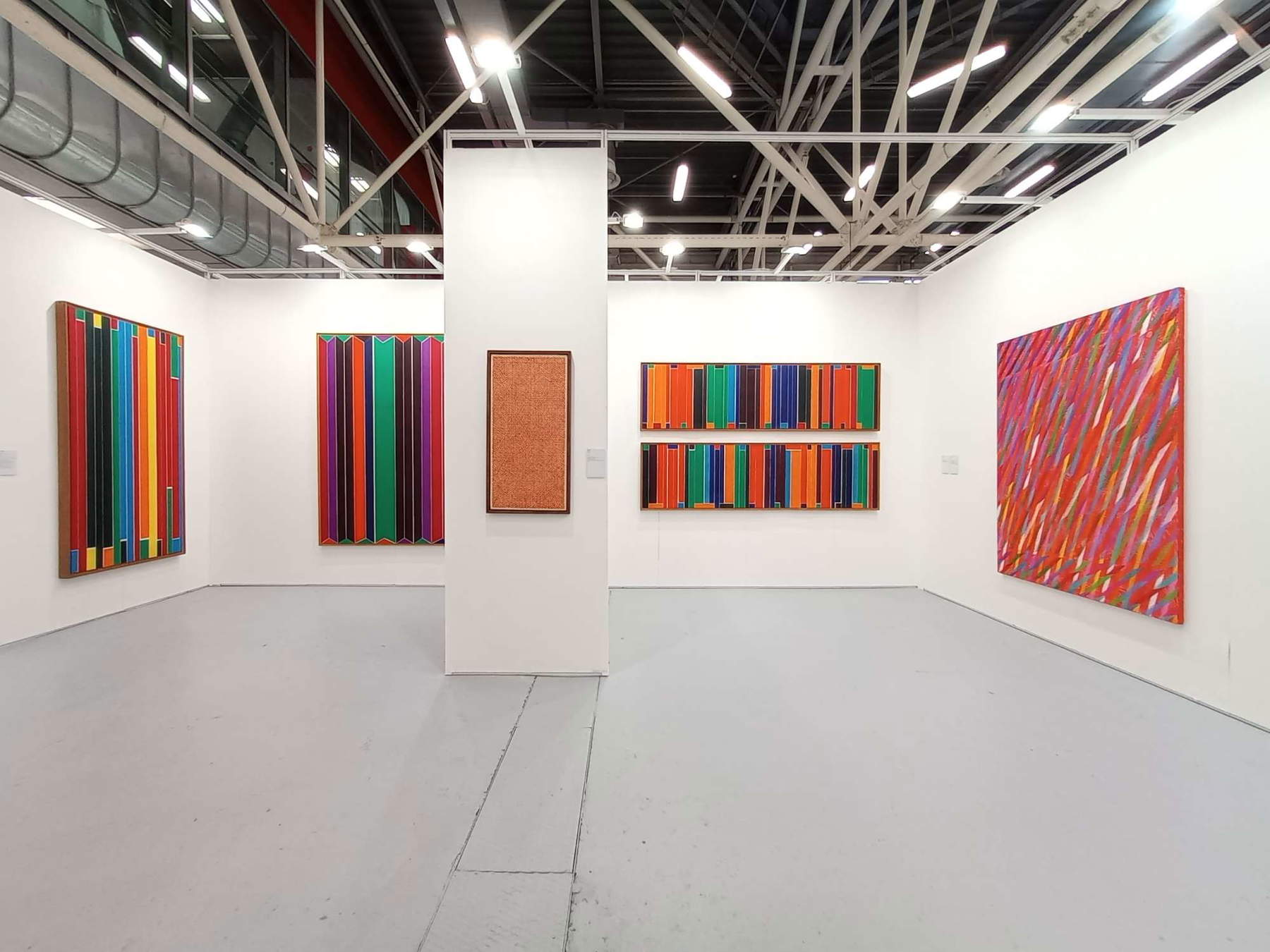
Established and new names at the booth of Rome-based Studio Sales gallery, which also mixes painting and sculpture. Worth seeing are the ironic works by Davide Monaldi from the Marche region of Italy, who reinterprets some traditional iconographic subjects with ceramics (not to be missed is the St. Francis talking to animals: among the animals are flamingos, pterodactyls and even a Gremlin) and the paintings by Romina Bassu, who focuses on female streotypes shaped by male culture. Among the established artists present is Flavio Favelli with his famous works made from chocolate wrappers.
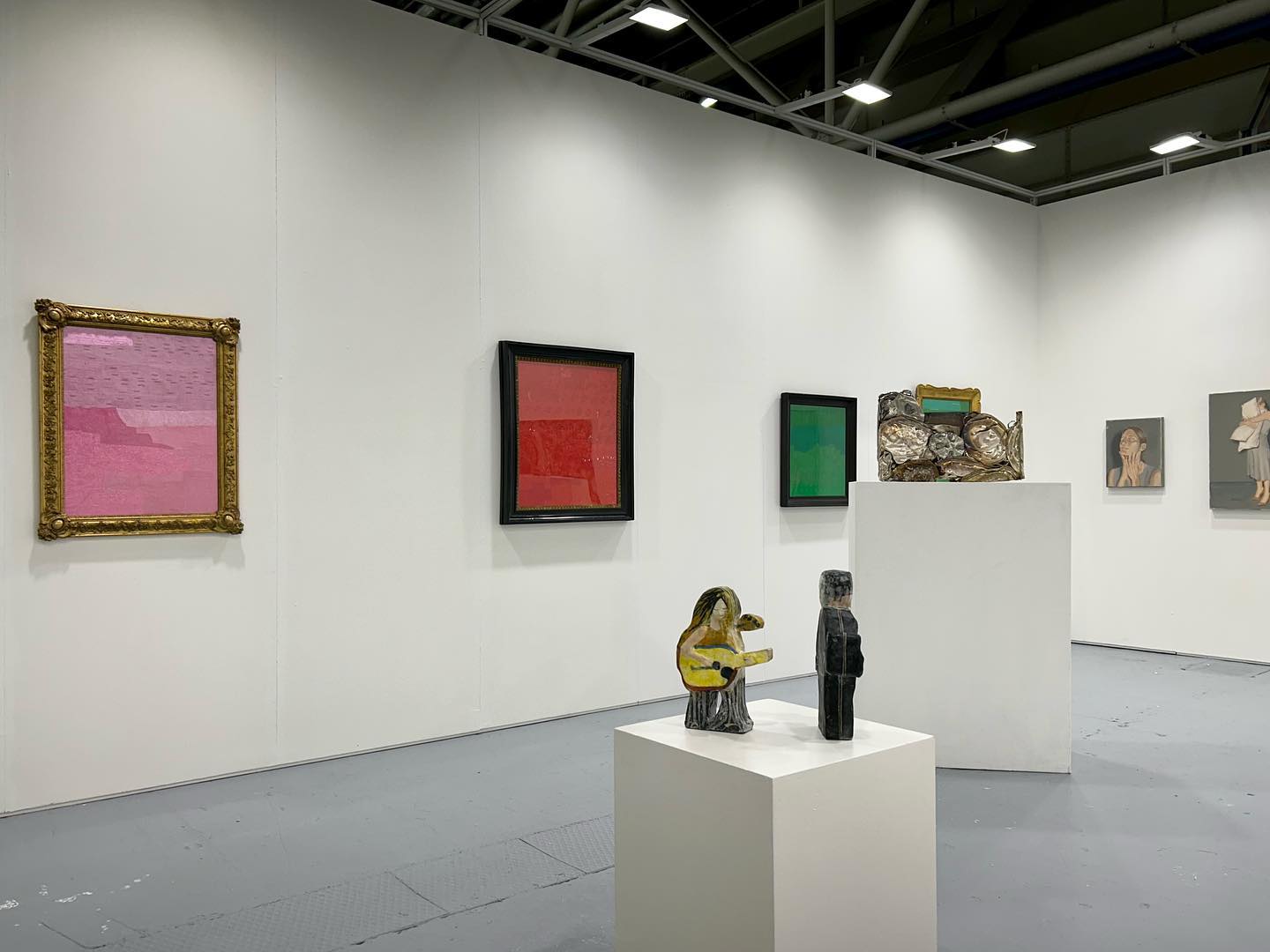
Among the best stands in the Pittura XXI section is that of the Roman gallery ADA, which devotes its entire space to the young Bergamo painter Diego Gualandris. Born in 1993, with already important participations to his credit (including a Quadriennale in Rome, the one in 2020), Gualandris presents himself at Arte Fiera with the exhibition La guardona, a sort of imaginary journey through fantastic worlds populated by dinosaurs and giant insects as seen from a statuette that Gualandris has in his room (a statuette, by the way, present at the booth). Definitely interesting prices for one of the best young Italian painters, a must see.

Naples-based Acappella is participating in the Pittura XXI section of Arte Fiera with a solo show by Claudio Coltorti. Born in Naples in 1989, Coltorti aims to “capture forces” by trying to overcome the dichotomy between figurative and abstract “through a kind of ’expanded realism,’” the gallery informs us, “in which the real obiectum of representation are not figures or objects, but relationships. Female silhouettes (duplicates of an unobtainable original) are installed at the center of depthless interiors, drawn to a screen where the human gaze (the painting seems to tell us) is what cannot be looked at.” A selection of his delicate recent paintings are all available to the public in the booth.
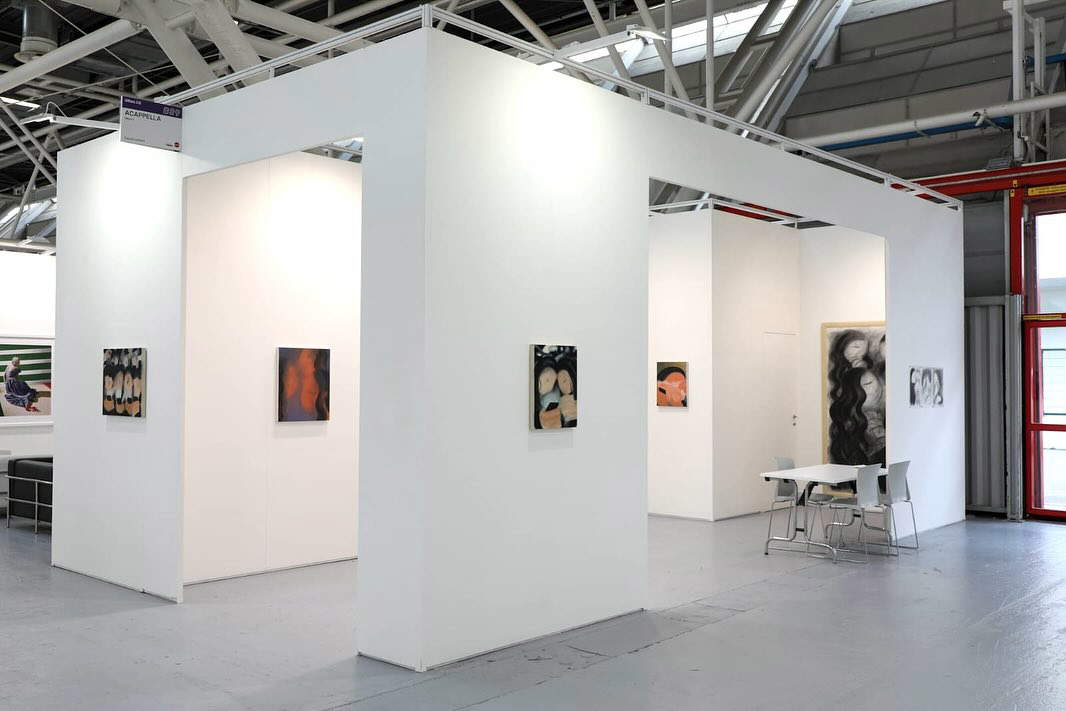
The Photography in Motion section is dominated by Glenda Cinquegrana Art Consulting’s booth, which features a booth dedicated to three artists-Mazaccio&Drowilal, Helmut Newton, and Tim White-Sobieski. A proposal that thus brings together one of the greatest photographers ever, an established artist, and a young duo, the one composed of Frenchmen Robert Drowilal and Elise Mazac (aka Mazaccio): their montages are among the most interesting things photography has to offer in this edition of Arte Fiera.
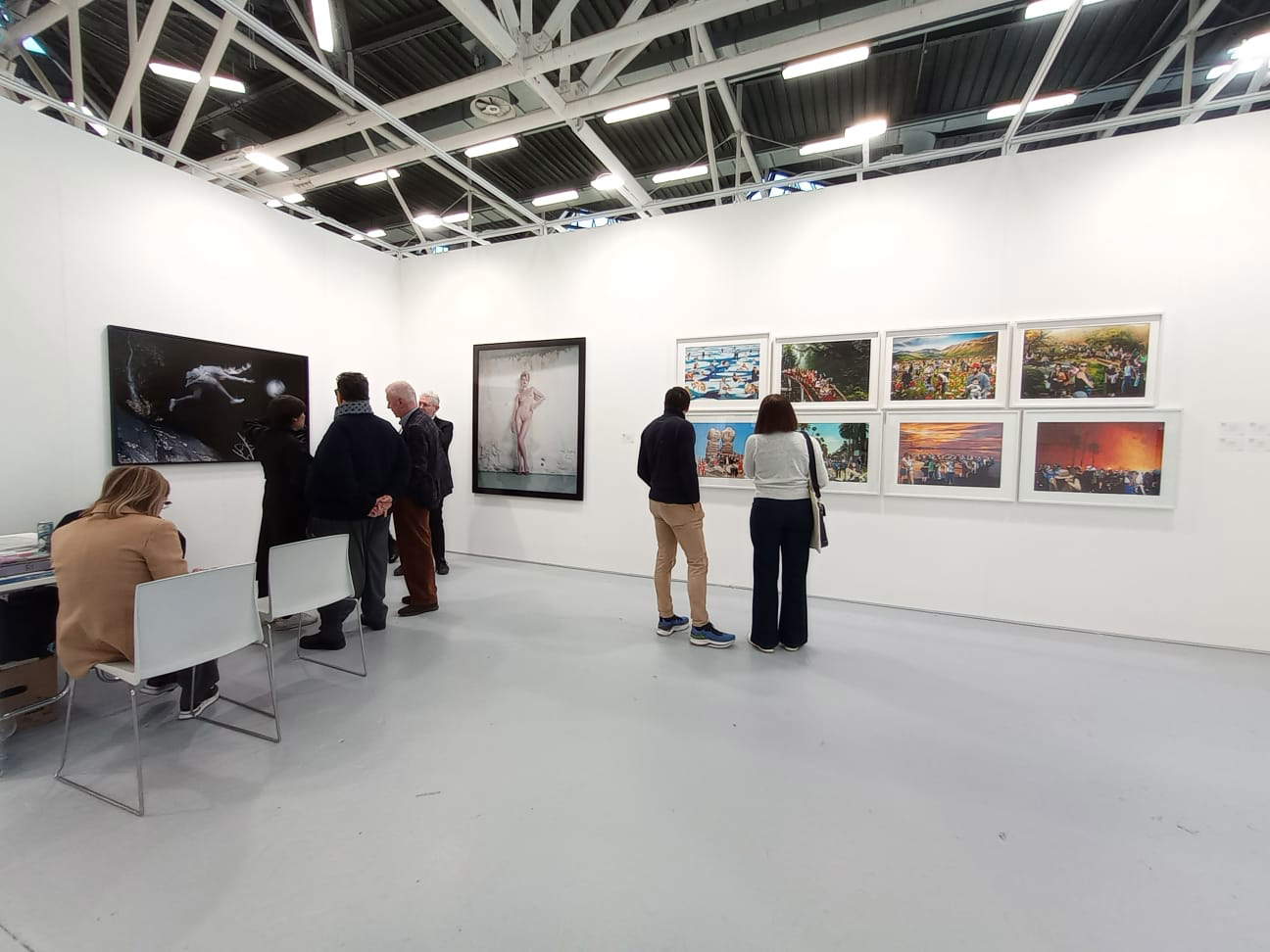
Be sure to mark booth A71 in Hall 25 to see the best solo show at Arte Fiera: it is titled It’s all over now, Baby Blue and is the solo show of Daniele Galliano, one of the greatest Italian painters of the last forty years, who is presenting his works in the beautiful booth of Federico Rui Arte Contemporanea. Quoting Bob Dylan to tell, with some monumental paintings and other visions instead more collected, the contradictions of the society of the 21st century. Powerful and evocative. And with very interesting prices.

The Ovens Gallery dedicates a tribute, in Hall 26, to the recently deceased Sicilian sculptor Girolamo Ciulla, a historic name in the Bologna gallery. Ciulla’s travertine sculptures, dedicated to the goddesses of Greek mythology and to animals (including the ubiquitous crocodile) that speak of ancient Mediterranean civilizations, soar over the blue arrangements reminiscent of the Sicilian sea. A moving salute to an artist to be rediscovered.

Lunetta 11 and Galleria d’Arte Niccoli are participating together in Arte Fiera to offer the exhibition Uomini antichi, a double solo show by CCH and Simone Settimo. “Two artists, different in age, education, path, geographical scope,” explains curator Fabio Belloni. "But above all different in poetics and research direction. Difficult to attempt a likeness. Or, precisely because they are so distant, in perfect dialogue. Both are restless figures, for whom it has been - or continues to be - essential to measure themselves with several languages, perhaps even simultaneously. On closer inspection, however, a common datum exists, and it must be recognized in the practice of painting: contaminated with much else, certainly; but basically the one of always. Impossible to reject a craft, with the tools and values it brings with it. Impossible also to disavow the models from which one descends. Ancient men, in essence; albeit with all the vitality that makes their discourse current. The following lines would like to outline them: keeping the theme of painting at the center, and looking in particular at the most recent evidence.
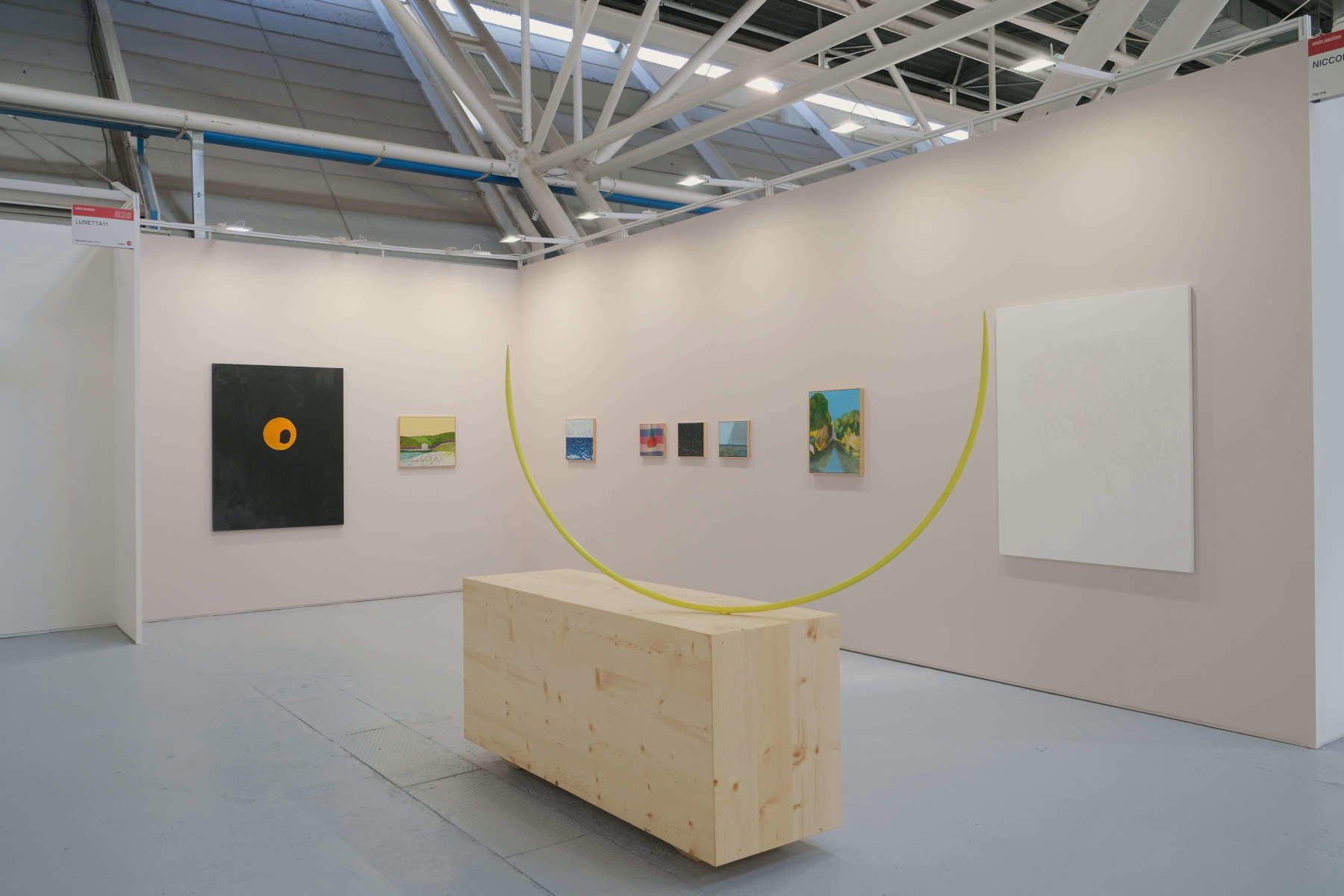
One of the best stands in Hall 26, featuring some of the artists who have made history in recent Italian art. Giulio Paolini, Vettor Pisani, Omar Galliani, and an admirable confrontation between Lino Frongia and Stefano Di Stasio. This is the proposal of Vigato Gallery, which focuses its entire booth on one theme: reflection on the past, which has always been one of the characteristics of modern Italian art, given the universal importance assumed by the tradition from which it arose. Many artists have felt themselves in continuity with that tradition; many others, especially in contemporary times, have taken it as an object of problematic reflection. They are the artists who make up the proposal of the Piedmont gallery.
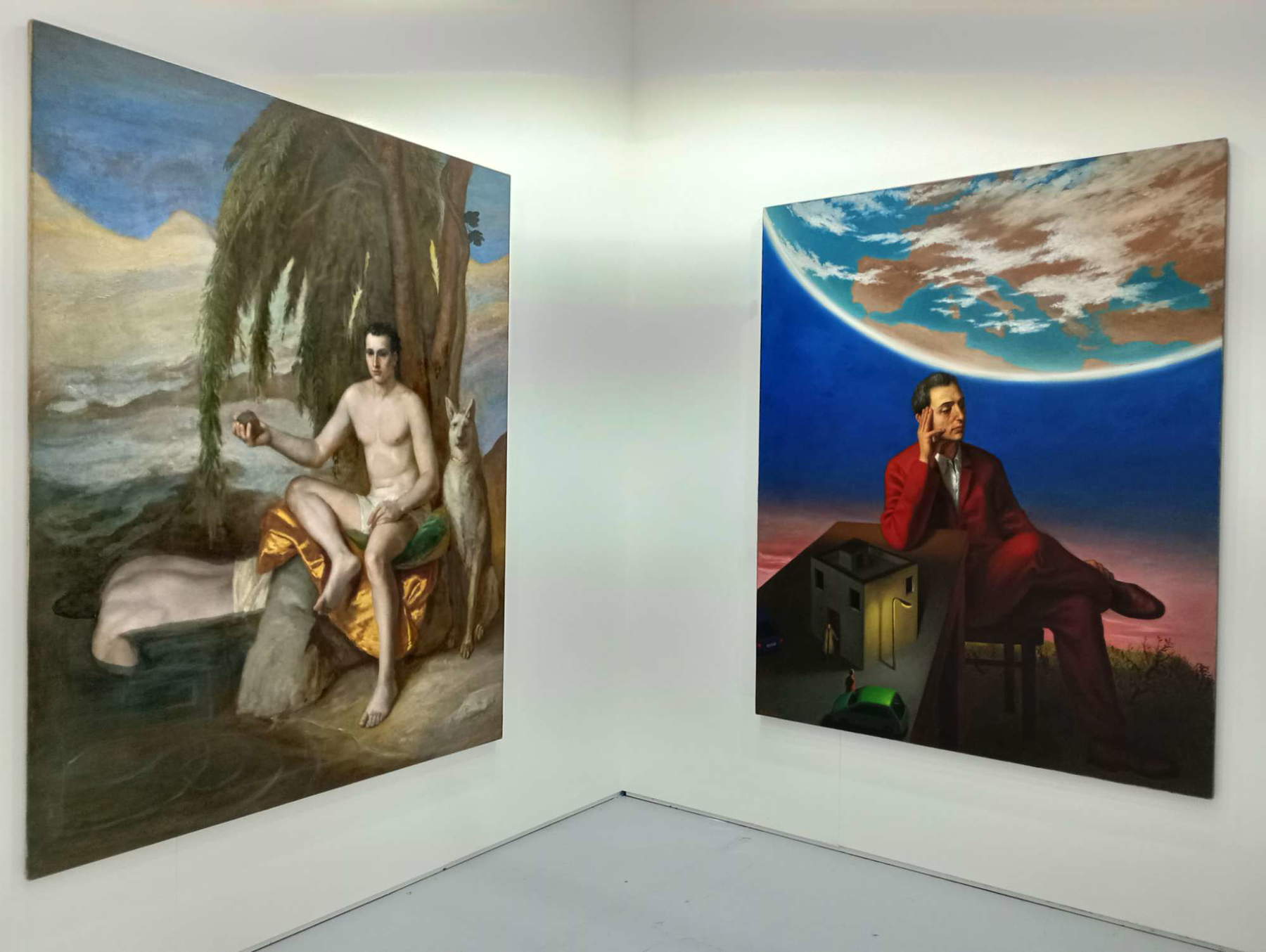
Boccanera, one of the galleries that, in our opinion, works best on young Italian painting, presents a single show by Linda Carrara, an artist who is now increasingly established. Bergamasque, born in 1984, she lives and works between Milan and Brussels: in her most recent works, the ones exhibited at Boccanera’s booth, the pictorial vision has shifted toward a “vitalist” representation of reality: the material and the pictorial action have become the focal point of the work itself, thus breaking free from the purely figurative for a “figural pictorial event.” In this sense, the images presented by the artist do not coincide with the things they describe, but are intended to evoke the primary experience that generated them, the observation to which they refer, their primordial side, almost in a metaphysical narration of both the pictorial event and the experience from which they arose.

Warning: the translation into English of the original Italian article was created using automatic tools. We undertake to review all articles, but we do not guarantee the total absence of inaccuracies in the translation due to the program. You can find the original by clicking on the ITA button. If you find any mistake,please contact us.